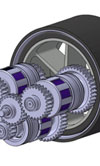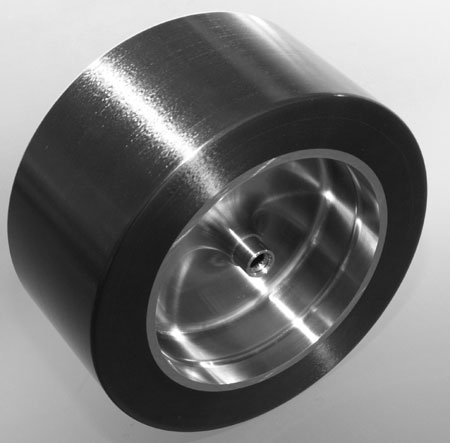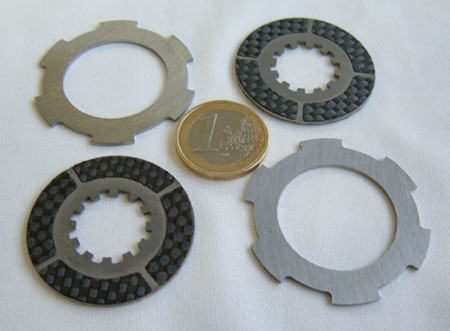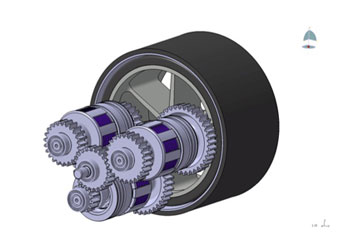KERS spreads its wings
 So far, KERS systems have received a mixed response in Formula One. Initially the technology was eagerly tested by the teams but during its first full season in Formula One (2009), it was regularly used by only a few.
So far, KERS systems have received a mixed response in Formula One. Initially the technology was eagerly tested by the teams but during its first full season in Formula One (2009), it was regularly used by only a few.
In truth, Formula One KERS still have some way to go before their advantages sufficiently outweigh the disadvantages, so it is perhaps in their wider application in motorsport that they will be fine-tuned and their advantages eventually fully exploited.
For the first time, KERS systems have been approved by the Automobile Club De L'Ouest (ACO) for use in the 2010 Le Mans 24-Hours race, though in the LM P1 class only, but there are currently no entrants who have agreed to run such hybrid cars at this year's event. Once again the reasons can perhaps be found in the benefits of KERS.
Regarding energy recovered from the brakes in the LM P1 cars for 2010, only electric hybrid systems are allowed, but the stored energy can only be returned to the rear wheels and so a four-wheel drive system is not allowed.
With only electric storage systems being allowed, this rules out one of the industry's leaders in the KERS field, Flybrid Systems. Director and co-founder Doug Cross explains Flybrid's position, "We are outlawed [this year] but we understand that flywheels are likely to be allowed from 2011, and we have seen some draft rules which say they are, so the situation is likely to change."

In contrast to the system used in Formula One, the ACO rules prohibit the use of a 'push to pass' button, thereby limiting the system to an economy function rather than an additional power boost, as stated in Article 1.13 of the regulations - "The use of such a system must not be aimed at obtaining additional power but at reducing fuel consumption."
To be considered a hybrid, a racecar must be able to move along the pit lane (a minimum of 400 m) at 60 km/h while using only the electric motor. By setting this minimum distance and speed requirement, the ACO has effectively set a minimum amount of energy you need to carry - enough to call the car a true hybrid.
On the energy front, the authorities have stipulated that between two braking events, you are not allowed to use more than 1 MJ of energy, whereas in Formula One a car is allowed only 400 kJ for the entire lap. "The Le Mans rules say you are allowed 1 MJ between two braking events but, as it turns out, that is entirely irrelevant because you just cannot capture that much energy," Cross explains.

The Flybrid system, which uses a flywheel to store energy, holds an advantage for LM P1 cars in that they are heavier than in Formula One. Where a Formula One car is limited to 60 kW (80 hp), there is no power limit for LM P1 cars and, while running at similar speed transients, the heavier LM P1 cars can capture a lot more energy. "So we would go up to 120 kW, and this makes our gearbox a little bit heavier," Cross says. "For Le Mans we would be storing and recovering about 1.8 MJ, more than four times as much energy."
ACO regulations dictate that the minimum weight of any hybrid vehicle must be identical to that of any other LM P1 cars using a conventional powertrain. With the focus clearly on fuel consumption, to achieve any benefit from a KERS system, a car would have to save one lap of fuel in every 13 laps.

With this efficiency requirement, one of the few ways to achieve this is to reduce the maximum power of the engine slightly to improve consumption. Alternatively, the strategy could be for the driver to back off the throttle towards the end of each straight, allowing the KERS to take over. Cross says, "One of the key effects you have to watch out for is that you will only save fuel if you reduce the amount of fuel you put into the engine. It seems obvious, but it isn't, and it has a massive effect on fuel [consumption] because that is the point where you are using the most power because the engine is at its fastest speed, burning fuel at the greatest rate, and so by backing off there you end up saving quite a lot. That would be one of my recommended strategies."
The flywheel-based system proposed for Formula One is built from more exotic materials, such as magnesium for the casings and titanium for the clutch baskets, than the LM P1 system, which is more cost-focused, and so uses more everyday materials such as aluminium and steels.
Fig. 1 - Flybrid flywheel
Fig. 2 - Clutches in Flybrid system
Fig, 3 - Clutched flywheel transmission (CFT) assembly
Written by Glen Smale